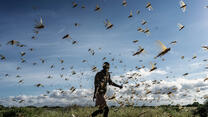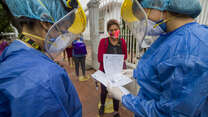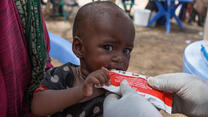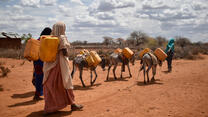Coinciding with COVID-19, an upsurge of desert locust is taking place in the Horn of Africa, Arabian Peninsula and Southwest Asia, with risk of spreading to the Sahel region of Africa if it is not stopped by July. The desert locust is the world’s most dangerous migratory pest. A one-square-kilometer swarm of this species of locust is capable of consuming the same amount of food in one day as approximately 35,000 people.
This the most serious desert locust outbreak in East Africa in 70 years and representing an unprecedented risk to food security and livelihoods. The United Nations Food and Agriculture Organization (FAO) is predicting that a fourth generation of eggs will hatch creating a new swarm in mid-June, coinciding with the start of harvest and threatening current crop production, livestock pasture and crop cultivation for the following season. Without intervention, desert locust swarms in the Horn and East Africa may cause mass crop failure, exacerbating an already serious food security situation and plunging 4.9 million people into crisis-level food insecurity.
The International Rescue Committee (IRC) is responding in Somalia, which is estimated to be hardest hit. Communities have already reported that more than half of their cultivated land was affected. As the situation deteriorates, women and girls face particular risks and increased vulnerability to external threats. Female-headed households will be particularly vulnerable to crop failure and livestock needs with less mobility and access to agricultural support services. In response, the IRC is engaged in desert locust task force activities and supporting communities with prevention and control measures.
Across the region, the IRC is scaling up necessary response and prevention to mitigate the risk of wide-spread famine. Yet, the lack of funding poses challenges in supporting communities. The IRC calls for $1.98 million to respond to the desert locust emergency in Somalia for the year 2020. The IRC also appeals to FAO, government and desert locust task forces to continue timely support to the affected communities, especially in providing analysis of locust movements, technical assistance for the control of the locusts, coordination and information sharing.



